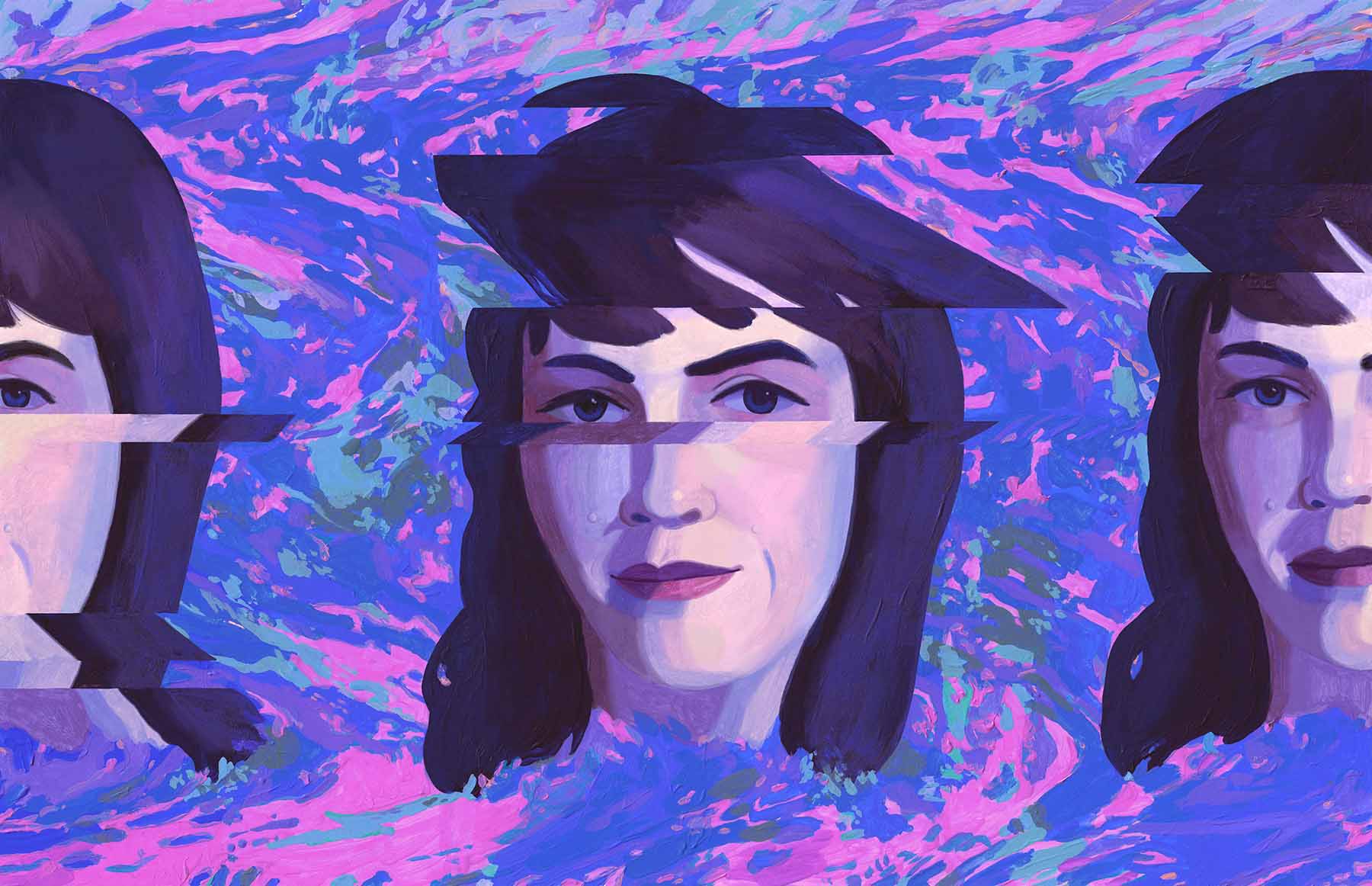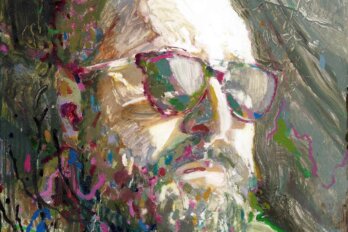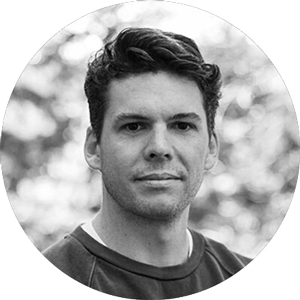I once met a girl who introduced herself to me as “brutally self-aware,” which has become a trendy quality for people to flaunt. This friend was particularly prone to self-portrayals of startling inaccuracy. I’d leave our conversations hopelessly confused until I realized that whatever she told me, I’d just have to assume the opposite: “I’m painfully shy” (she was in fact quite gregarious), “I’m an empath” (she was kind but not debilitatingly so). At first, I thought this mind trick of mine was unique to her, but I soon worried I could apply it to almost anyone, including myself. “Believe people when they tell you who they are,” Maya Angelou wrote, but I wonder if it’s really the reverse that’s true.
Rachel Cusk has always been dubious about the relationship between telling and being. Parade, her seventeenth and most recent book, opens on an artist named G, who, “because he could find no other way to make sense of his time and place in history, began to paint upside down.” His “discovery of inversion” is so stunning that he is showered with plaudits, and even his wife, when she starts to feel overwhelmed, “simply inverts her surroundings and instantly feels a sensation of peace.” By painting the world right side up, your brain fills in blanks and makes assumptions; upside down, ambiguous shapes and shadows reveal themselves in their true form. Cusk, it seems, is familiar with the opposite game too—self-knowledge requires some critical distance.
Advertised as “expand[ing] the notion of what fiction can be and do,” Parade is difficult to define. It’s not the first time the Saskatchewan-born, Britain-raised writer has been credited with reinventing the novel—painting upside down, so to speak. After an award-winning run of novels in the 1990s, Cusk turned to her own life for creative inspiration, only to be eviscerated. Her triad of memoirs, in which she reveals personal details of her divorce and disappointment with motherhood, prompted widespread outrage and a lawsuit. But with the 2014 novel Outline, Cusk broke form and was once again critically lauded. The first instalment of a trilogy, Outline follows Faye, a writer, as she teaches and travels, her personal details revealed through patchwork conversations with friends and strangers. “Rachel Cusk Gut-Renovates the Novel,” a New Yorker headline declared of the trilogy. In Parade, it’s a total demolition.
“I don’t think character exists anymore,” Cusk infamously told The New Yorker in 2018. In Parade, characters exist, sort of, but they’re mostly artists, and they’re almost all named G. In some chapters, G is a man who paints nudes of his wife in which he renders her hideously ugly; in others, he’s a painter so moved by a cathedral he sets aside his own marginal relationship to the church to capture its glistening spires. The Gs, who start to read like a redacted legal document, tempt identification with real-life artists—there are apparent glimpses of the work of Georg Baselitz or Louise Bourgeois—and overwhelmingly with Cusk herself. For Cusk, the coherence of a single identity is a myth, one too rigid to encapsulate the fragmented life of a female artist, or really anyone at all.
The problem with character in the novel, Cusk told The Yale Review, is that, like a game of broken telephone, characters imitate archetypes rather than their source material. “In fact,” she says, “if we reexamined our relationship to one another, we’d probably find that there are not that many links between standard literary form and living.” Like self-awareness, conventions of character, plot, and form are convenient organizing principles that only get in the way of really understanding ourselves. In Parade, Cusk, dubious as to whether the novel still exists, attempts to reinvent a literary form that can capture the fractured nature of being alive.
I t’s not just character that Cusk has tired of. In Parade, neither setting nor temporality is stable, and Cusk flits between plots with abandon. But it would be unfair to call the book formless—Parade is neatly divided into four sections: “The Stuntman,” “The Midwife,” “The Diver,” and “The Spy.” Cusk plaits together tales of different Gs and the memories of uncertain narrators to theorize on the roles assumed by artists, women, women artists, the spouses and children of women artists, and the women unfortunate enough to be married to artists.
Unlike the weightless momentum maintained in the Outline trilogy, Parade is sticky—the story of a G frequently veers into polemic and art theory. But Cusk isn’t writing to be easily read: if the manic pacing of these fragmented and seemingly dissonant sections is frustrating, it’s only because so too is the life of a female artist. The questions in Parade—whether a woman, obligated to husband and children, can ever be an artist in the same way a man can; the exploitative nature of artistic representation; art’s capacity for truth—shape Cusk’s own career. Her evolution broadly mirrors the development of art embodied in the Gs: from realism through impressionism and abstraction. An artist starts out by copying the greats—Cusk has early-career novels inspired by Charlotte Brontë, Virginia Woolf, Evelyn Waugh, and Stella Gibbons. Then she paints what’s in front of her, refining her capacity to replicate her surroundings—maybe a bowl of fruit or her own visage in the mirror. But Cusk was pilloried for her honest depiction of motherhood. After reading her 2001 memoir, A Life’s Work: On Becoming a Mother, one columnist reportedly called for her children to be taken away, and she was invited on talk shows to defend herself from accusations that she was an unfit mother.
As if speaking directly to her critics, who maligned her for revealing so much of herself in her memoirs, Cusk removed herself almost entirely from the Outline trilogy. Her protagonist, Faye, is more listener than narrator, her character reflected in her psychologically fraught conversations with others, glimmers of insight layered like an impasto painting in the impressionistic trilogy. Cusk’s 2021 novel, Second Place, marked a return to subjectivity, as a writer recounts the psychological and vaguely paranormal terror wrought by an artist visiting her otherwise placid marshland home. But she’s all too aware that to recount a story as it happened is an impossible feat. “You see,” the narrator sighs, “I believed in the plot of life, and its assurance that all our actions will be assigned a meaning one way or another.” Cusk suggests that these conventions inhibit not just what makes an honest novel but an honest life.
Throughout her career, Cusk has negotiated how to represent herself in her work. In her memoirs, she was something of an emotional exhibitionist; in Outline, an almost silent stage manager; in Second Place, suffocated by her own perspective. With Parade, Cusk has pressed her oeuvre through a meat grinder only to reassemble it. The book casts doubt not just on the need for an author to be so personally identified with her work but on the coherence of identity altogether. In “The Spy,” the novel’s final chapter, G can make films only under a pseudonym. His brother exists in a circle of artists and intellectuals who start to rise to prominence, but their identities seem a hindrance to G, who thinks:
When they brought out something new, it was compared to the last thing they had done; it was praised or criticized on that basis; a familiarity, a form of ownership had been established that permitted judgment. Was it impossible to create without identity? Why did a work need to be identified with a person, when it was just as much the product of shared experience and history?
The filmmaker can only work anonymously, a decision he admits is “undeniably cowardly” but insists protects him from losing too much of himself. He sets about crafting a film from the vantage point of a shared experience and history—he casts regular people as actors and shoots them from a distance, absent the heavy-handedness of a Hollywood close-up. He starts recording them, determined not to edit his footage, though his peers expect him to succeed by “resolving the confusion and ambiguity of reality, not deepening it.” “To see without being seen,” Cusk writes, to disappear into a crowd—this is what it means to be a spy, and an artist too.
The story of the filmmaker G, who sits by his mother’s deathbed, runs parallel to a narrative of daughters also mourning their mother. Cusk writes this thread in the first-person plural, a “we” that could refer to anyone—Cusk’s own daughters, the daughters of artists, artists themselves, a single woman whose mutating relationship with her mother renders her a different daughter every day. When their mother does die, the daughters go to the exhibition of an unknown artist. They look for clues, but all they have is the paintings themselves, and in them they find the “rarity of love” instead. Stripped of an identity, the art reveals something deeper. Parade finally proposes the death of the author, artist, character, setting, and story altogether—a frameless unity wherein manifold contradictions can find expression.
When G first discovers that he can paint upside down, it comes as an enormous relief that he can be honest in a new way, for “reality would always be better than the attempt to represent it.” Like Cusk, he begins with a self-portrait with his spouse—and paints it again and again until his work becomes “bigger and more abstract” as his subjects are “broken down into shapes, into disintegrating shadows that seem to be fading or reintegrating into the picture plane.”
Parade is a novel composed of broken-down shapes and disintegrating shadows, sometimes as ugly and revealing as the nude that G paints of his devoted wife. “To be nude is to be seen naked by others and yet not recognized for oneself,” the art critic and novelist John Berger posited in his 1972 book Ways of Seeing. “To be naked is to be without disguise.” Cusk, who at this point in her career can’t help but be seen, would likely concur—we are always engaged in some level of masquerade. She has divulged details of her postpartum discontent, custody battle, and finances, only to realize that perhaps our identities are too clouded in our own self-mythology to ever truly be laid bare. But in this diffuse novel about the dissolution of the self and the multiple personalities required to be Woman, Artist, Wife, Mother, Daughter, Cusk shows us how we might start to undress.






